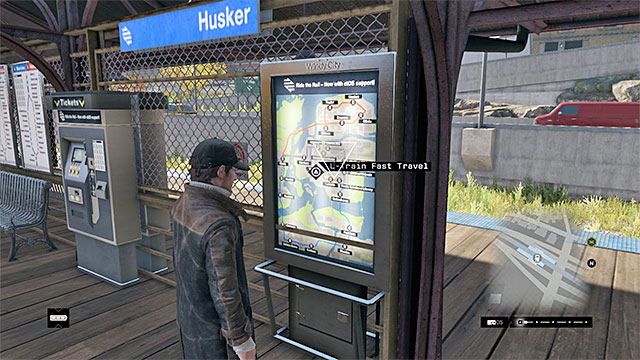Watch Dogs: Hideouts and exploration of the city

The functioning of hideouts is similar to that of their counterparts from Grand Theft Auto, so they are a safe haven, where you can rest and save your progress. The first hideout is unlocked towards the end of the first main mission and it is a motel room Parker Square district. The following hideouts become available with your progress in the game. They are marked with green arrows, on the map, and the important piece of information is that, if you are currently not on a mission, you can fast travel there. Selecting the hideout on the map of Chicago activates this option.
After you get to your hideout, you can use your wardrobe and the bed. The latter is more important because, after you go to sleep you:
- save your current progress
- reset the police interest bar
- regenerate Focus
- recharge the battery (necessary for advanced hacking actions)
- change the current time of the day (you can set the alarm clock to go off at the specific hour)

Chicago is a big city and there are various ways, in which you can make it easier for you to explore it. One of the more useful functions is the in-built GPS. From the level of the world map, you can specify your destination and, from now on, there will appear blue arrows on the ground, determining the shortest route. I recommend that you use this option whenever you are urged by the circumstances in a given mission, e.g. whenever you need to reach a given location within the allotted time.

When it comes to traveling from one end of the city to another, you can do that on your own, but it is a much better way to use the railway system. You always need to start by reaching one of the stations, marked on the map, and interact with the map of Chicago (an example in the above screenshot), to determine the end station.
Note - you can also use the railway to escape the police. It is possible to control it, to some respect. To make this available, you need to unlock one of the abilities first, which has been described in the chapter entitled Abilities.
- Watch Dogs Game Guide
- Watch Dogs: Strategy Guide
- Watch Dogs: Activities and hints
- Watch Dogs: Obtaining the means of transport
- Watch Dogs: Using the available means of transport
- Watch Dogs: How to escape the police?
- Watch Dogs: Reputation
- Watch Dogs: Hideouts and exploration of the city
- Watch Dogs: Main and side missions
- Watch Dogs: Earning money
- Watch Dogs: ctOS towers and control centers
- Watch Dogs: Activities and hints
- Watch Dogs: Strategy Guide
You are not permitted to copy any image, text or info from this page. This site is not associated with and/or endorsed by the developers and the publishers. All logos and images are copyrighted by their respective owners.
Copyright © 2000 - 2025 Webedia Polska SA for gamepressure.com, unofficial game guides, walkthroughs, secrets, game tips, maps & strategies for top games.
